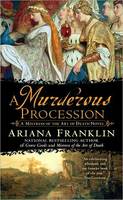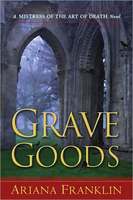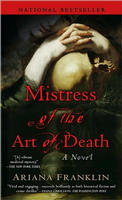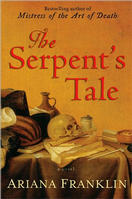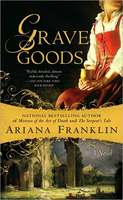
Grave Goods
A Mistress of the Art of Death Novel #3
Berkley Pub Group
Mystery: Historical, Mystery
March 2, 2010
ISBN-10: 0425232336
ISBN-13: 9780425232330
Available in: Trade Size
Grave Goods
by Ariana Franklin
The “richly detailed, almost indecently thrilling” (New York Times) follow up to The Serpent’s Tale.
When a fire at Glastonbury Abbey reveals two skeletons, rumor has it they may belong to King Arthur and Queen Guinevere. King Henry II hopes so, for it would help him put down a rebellion in Wales, where the legend of Celtic savior Arthur is strong. To make certain, he sends Adelia Aguilar, his Mistress of the Art of Death, to Glastonbury to examine the skeletons.
At the same time, the investigation into the abbey fire will be overseen by the Bishop of St. Albans, father of Adelia’s daughter. Trouble is, someone at Glastonbury doesn’t want either mystery solved, and is prepared to kill to prevent it...
Other Books by Ariana Franklin
Ariana Franklin's Bio
Ariana Franklin was born in London just before World War II. During the war, she and her parents lived with her father's uncle, a minister in Winston Churchill's wartime cabinet. In London, Ariana had a privileged life, with a nanny, a maid and a chauffeur. But eventually her mother got tired of the constant air raids, so they went to live with Ariana's maternal grandparents in the seaside town of Torquay in Devonshire, leaving her father behind — permanently, as it turned out.
After her parent's divorce, Ariana and her mother had very little money and lived in a tiny apartment over a shop. It was very different from their days London, but in retrospect, Ariana was glad to have seen both sides of life.
To earn money, she left school at fifteen. Ariana had a great love of journalism—perhaps the only thing inherited from her father, a correspondent for the Times—so she looked for work in that field. By the age of seventeen she was back in London, working on a local paper in its East End, where she was spotted by a national newspaper. At twenty, she became the youngest reporter then in Fleet Street. Sadly, on her 21st birthday, Ariana was covering a murder on the South coast and missed her party entirely. "But, it's my birthday," she protested to her news editor when he told her to cover the murder. "Many happy returns," he said, "and now get down to Southampton."
Ariana found that she loved a reporter's life: accompanying the Queen on a visit to Paris, invading Wales, dressed for combat, her face blacked, on an exercise with Royal Marine Commandos under fire from live ammunition.
Marriage to a fellow journalist, Barry Norman, and Fleet Street didn't mix — he was always flying into the country as she flew out of it. So, not wanting another divorce in the family, Ariana gave up her newspaper career and instead settled down in the country, giving birth to two daughters within fourteen months of each other. With a child on either hip, she continued to write. Anything. Magazine articles, biographies, ghost stories. Most of all, history, especially women's history. How did we get here? Why didn't we get here sooner?
She became a specialist on the early Middle Ages, its justice, its climate, dress, food, habits, and crime. In fact, her first book, which dealt with the coming of the Common Law and the jury system under that great English kings, Henry II, received plaudits from university professors of history and won a BBC award for its accuracy and depiction of the twelfth century. Accuracy is important, Ariana believes. If a reader's paying you the compliment of buying your book, you've got to get it right.
So there she was, happily writing historical novels to good reviews and charting women's fight for equality through the ages. She had just dealt with the French Revolution and was wondering what the hell to do next when literary agent, Helen Heller, came into her life with an irresistible offer, "Why not write an historical thriller?"
Now, if Ariana's a sucker for anything, it's for Raymond Chandler's dictum: "When in doubt, have a man come in with a gun." But this time, the man with a gun needed to be a woman. So it was back to the twelfth century for Ariana—no guns, but lots of crossbows, and poison and daggers, and, believe it or not, a school of medicine in Salerno where women could train as doctors and where autopsy was permitted.
Thus Adelia, the 12th century female pathologist, was born to take up her role as "Mistress of the Art of Death" fighting medieval crime and speaking for victims who otherwise would have been forgotten. Sounds exciting? It is. It's a thriller. It's also, because Ariana Franklin's writing it, accurate, fascinating. And don't forget fun...


